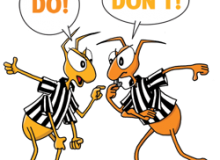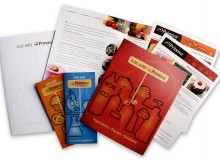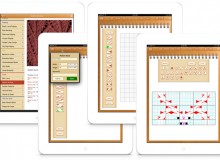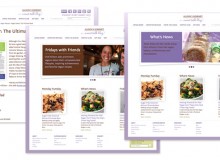 If you believe that a typical corporate brochure is a one-off piece containing all the minutiae associated with a company, that costs way too much money and that no one ever really reads, you’re right. ROI for most corporate brochures is hard, if not impossible, to track. Many brochures don’t have a call to action let alone a method for determining effectiveness. They’re not integrated with other marketing or sales initiatives. They have no links to other tools. No means of continued engagement. They’re failures and budget suckers.
If you believe that a typical corporate brochure is a one-off piece containing all the minutiae associated with a company, that costs way too much money and that no one ever really reads, you’re right. ROI for most corporate brochures is hard, if not impossible, to track. Many brochures don’t have a call to action let alone a method for determining effectiveness. They’re not integrated with other marketing or sales initiatives. They have no links to other tools. No means of continued engagement. They’re failures and budget suckers.
And yet, some corporations diligently print their corporate brochure every year or two and see nothing wrong if they can’t attribute any value to the exercise. After all, corporate brochures are part of the cost of doing business, right?
Stop the Madness! Let’s look at strategies for creating a more successful brochure.
Wallflowers Don’t Get Asked to Dance.
Most corporate brochures don’t get read because they’re boring. They don’t even get looked at because they’re unattractive. Boring + unattractive = waste of marketing $$$.
There are a few that succeed. These have:
- A clear focus.
- Enthralling stories.
- Engaging formats.
- And often are fun to read and share.
Insanely awesome corporate brochures also integrate – in a meaningful way – into your overall marketing effort. They are not standalone pieces mailed to customers and stakeholders ad nauseam. There’s no reason why your corporate brochure can’t be a start or continuation of an ongoing dialog between you and the world. Shoot, you can even integrate your print brochure into social media by using it to start a Twitter dialog and vice versa. Bring up issues. Start conversations.
What you don’t want to do is use this piece to simply list your equipment or services. Just because it’s a brochure doesn’t mean it’s a one-way communication tool. Integrating a brochure into the dialog chain makes it a more effective tool and more likely to be shared.
If the Story’s Too Big, Chunk It.
If so much happened in your company this year, consider creating several mini-corporate brochures. This does two things:
- Doesn’t overwhelm folks with too much info at once.
- Provides an opportunity to continue the dialog over time.
It’s About People, People!
Keep in mind, everything related to your company is also about people and their stories. No one wants to see more widgets even if your widgets are better. That’s the job of your product catalog. What people want to know is, “how do your widgets affect people like me?” A testimonial best tells the story. Something prospects can relate to.
Invest in good photography of real people. Remember, real people trump 20-something models. And just because you’re using real people doesn’t mean you should use your 19-year-old nephew as a photographer because he’s taking a journalism class. Good people photographers know how to make regular folks look good. Awesome people photographers also know how to tell a story.
Proof is in the photos. Even though everyone knows that anything can be Photoshopped, there’s still an enduring trust in the photographic truth over words or hearsay. If you’re a 5-star hotel with THE best facility, back up your claim with photos. If you’re known for having the happiest clients in the industry, show me. Anyone can write a testimonial and have your client sign off on it. But when your client allows inclusion of a photo – well, that’s commitment and trust.
Look Good While Teasing.
Your corporate brochure is not an encyclopedia for your company. Hold back key information so folks have to talk to you to get more. Invite them to ask questions. Better yet, make them WANT to know everything about you. Divulging too much upfront allows prospects to make a decision without getting to know you better. Use your corporate brochure like bait; make them want you and beg for more.
Surprise, Surprise, Surprise!
Put your best foot forward by investing in the best design and printing you can afford. And make it engaging. Surprise folks. Do something with your brochure that’s unexpected and worthy of conversation.
Here’s an example: A printer I know just sent out an engaging corporate brochure to create awareness of their environmental commitment. Yeah, yeah, everyone’s on the environmental bandwagon but this is my point! What engaged me about this brochure was that it very obviously wasn’t like all the other environmental corporate brochures in my mailbox.
This particular printer’s brochure tells the environmental story at a personal level by using photos of real employees being supervised by animals. Yep, animals. The notion that this printer is partnering with nature is bodaciously announced on page one as a corporate merger with nature, further ‘proven’ with entertaining shots of employees and animals working side-by-side. The fact that the animals in the shots are plastic lawn ornaments just makes it all the more entertaining and fun to read. (Along with the disclaimer that “…no animals were harmed in the making of this brochure but several employees had their dignity completely destroyed.”)
Additionally, the brochure pages are bound peek-a-boo style like those Advent calendars where you open the panel to see the image behind it. Specifics about what they’re doing environmentally are listed succinctly on each page. Overall, the brochure is highly interactive and entertaining while reinforcing the printer’s merger with nature.
All in all, this brochure is a perfect example of when reinventing the wheel is worth the effort. They ended up with a highly targeted vehicle that I feel compelled to share with others.
Keep The Conversation Going.
Too often, corporate brochures fail to start conversions. They also fail to continue conversations because they don’t integrate into other marketing and sales tools. Create a series of printed mini-corporate brochures promoted via email, with requests tracked in fulfillment and invitations to engage via social media tools like Twitter or blogs. You can even start the conversion in the brochure and keep it going and current via your corporate blog.
The trick is to start thinking of your corporate brochure as more than a brochure. It’s a tool rather than a place to document your mission statement and history. It’s a lead in. It’s something that you can use more effectively if you start thinking of it as one small piece of a larger conversation. Only this way will you be able to use it more effectively.
— by Julia Moran Martz
 The brand is everything today. Most marketers believe that nothing is more important to their organization’s success – let alone their personal careers – than protecting the brand. But just because marketers think it’s important doesn’t mean companies are doing it well.
The brand is everything today. Most marketers believe that nothing is more important to their organization’s success – let alone their personal careers – than protecting the brand. But just because marketers think it’s important doesn’t mean companies are doing it well.







